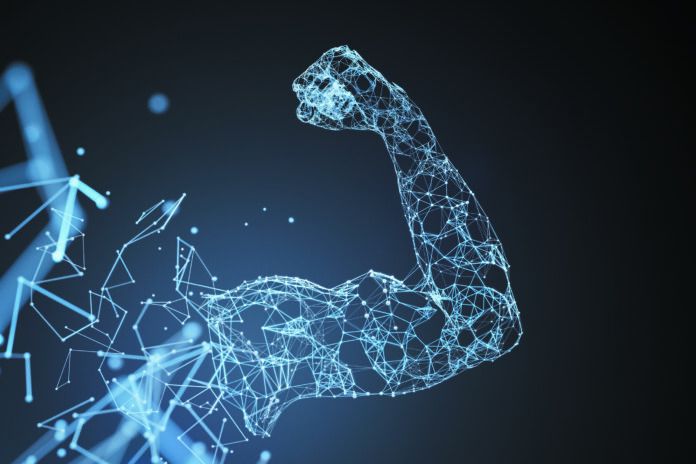We all lose muscle as we age. Roger A. Fielding, PhD, a professor of biochemical and molecular nutrition at the Friedman School and senior scientist of the Nutrition, Exercise Physiology, and Sarcopenia Team at the Human Nutrition Research Center on Aging, leads a team of people working to uncover the biological mechanisms that cause muscles to increase in size and strength after resistance or strength training. They also study the health benefits of physical activity, muscle-strengthening exercise, and diet in older adults. Tufts Health & Nutrition Letter spoke to Dr. Fielding to get the latest on the impact of muscle loss and what can be done to maintain strength for an active, high-quality life—whatever age you are.
THNL: Why do we lose muscle as we age?
Dr. Fielding: A number of normal biological and metabolic changes cause us to lose muscle mass and strength as we age.
When we move, a number of specialized chemical pathways in our muscles are turned on. These trigger the production of muscle proteins that cause the muscle to increase in size. Starting around age 50, these signals get progressively weaker. Older adults can still build muscle, but not as quickly, and not as much. There are also genes that get turned on when we activate our muscles. We found changes in the expression of more than 150 genes when younger men participated in strength training, but only 42 in older men. This is likely part of the reason people of different ages respond differently to strength training regimens.
Some—but certainly not all—older adults develop sarcopenia, a syndrome in which the loss of skeletal muscle mass and strength is so severe it decreases quality of life and increases the risk of disability, hospitalization, and death. The risk of developing sarcopenia is likely influenced by things like peak muscle mass and strength in your youth and lifelong diet and activity habits. Conditions like cancer, type 2 diabetes, and chronic heart failure and lung disease may accelerate the loss in muscle mass and strength.
THNL: Muscle is built from protein. Does eating more protein help?
Dr. Fielding: If you, like most Americans, already consume more than the recommended amount of daily protein (0.8 grams per kilogram, or 0.36 grams per pound), I don’t see any clear evidence that more protein alone is going to do much for your muscles.
Only the estimated one-quarter to one-third of older adults who do not get enough protein should consider increasing their protein intake. I should note that some researchers and geriatric societies (especially in Europe) advocate higher protein intake—typically in the area of one gram per kilogram—for older adults.
High intensity resistance training can increase muscle mass without increased protein intake. For the best results, combine adequate dietary protein with resistance training (like working with weights, bands, and so on). The two together seem to have an additive or synergistic effect on muscle building.
THNL: So, what is the best way to maintain—or even build—muscle later in life?
Dr. Fielding: We can’t make old muscle look like young muscle, but we can slow the rate of loss (and even build muscle) with physical activity, resistance training, and dietary changes if necessary. My top tips are listed in the Take Charge! box.
➧ Combine diet and exercise. The combination of regular resistance training (like working with weights) and adequate dietary protein builds more muscle mass and strength. But don’t go for extra protein by itself.
➧ Resist! Resistance training includes weightlifting, using weight machines or bands, or doing body weight exercises like pushups, squats, sit-ups, and planks. Many yoga poses also involve resistance. Aim for at least one to two sessions of resistance training a week. Be sure to engage in multiple types of resistance activities to ensure working the large muscle groups of both the upper and lower body (arms and legs).
➧ Start Slow. If you are new to strength training, start with a class or orientation at your local Y or other community or health organization or a personal trainer. If you have health or physical issues, discussing with your health-care provider if you would benefit from a referral to a physical therapist is a good place to start.
➧ Don’t Overdo It. You do not need to push yourself to extremes to get benefit. Start slow and work until a muscle group feels tired. You will notice a difference over time.
➧ Step it Up. The key to building and maintaining muscle is to use your muscles regularly and continually challenge yourself by increasing weight or repetitions when an exercise gets too easy.
























